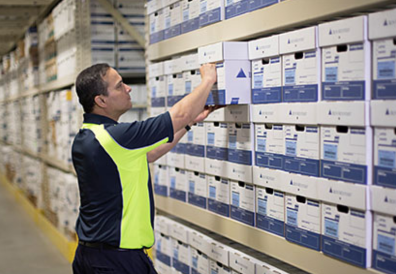Greening the chain: 5 ways to navigate the sustainable path in the IT asset value chain
In today's era, where environmental consciousness is imperative, the intersection of sustainability and the IT asset value chain becomes pivotal.

Why "greening the chain" matters
In today's era, where environmental consciousness is imperative, the intersection of sustainability and the IT asset value chain becomes pivotal. "Greening” the IT asset value chain signifies implementing environmentally sustainable practices, emphasising both an ethical obligation and a strategic imperative for long-term success.
Navigating the IT asset value chain landscape
To properly understand the strategic significance of "greening the chain," we embark on a comprehensive journey through the IT asset value chain. Identifying key touchpoints, we gain insights into the evolving landscape and the pressing need for sustainable practices to ensure relevance in a changing world.
Embracing five circular principles
Central to this strategic imperative is the alignment of IT asset practices with circular economy principles. By doing so, organisations not only contribute to a sustainable future but also unlock strategic advantages, illustrating the significant benefits of adopting a circular approach.
#1. Design for durability and upgradeability:
Circular IT asset management (ITAM) begins with designing hardware and software for durability and ease of upgrade. By extending the lifespan of IT assets through modular designs and upgradable components, organisations reduce e-waste and promote a circular approach to resource utilisation.
#2. Implement efficient end-of-life strategies:
Circular ITAM emphasises responsible end-of-life practices. Organisations should adopt strategies for the proper repurposing, recycling, and disposal of IT assets, ensuring minimal environmental impact and maximum recovery value.
#3. Promote reuse and refurbishment:
Rather than discarding assets at the end of their primary use, circular ITAM encourages the refurbishment and reuse of IT equipment. By extending the life of devices through systematic maintenance and upgrades, businesses contribute to a more sustainable and circular economy.
#4. Adopt open-loop supply chains:
Circular ITAM integrates open-loop supply chains, where materials from discarded IT assets are reclaimed, refurbished, and reintroduced into the production cycle. This open-loop approach reduces the reliance on virgin resources, minimising the environmental footprint of IT operations.
#5. Facilitate transparent and responsible sourcing:
Circular ITAM extends beyond end-of-life considerations to embrace responsible sourcing practices. Organisations should prioritise suppliers committed to ethical and sustainable sourcing of materials, ensuring that the entire lifecycle of IT assets aligns with circular economy principles.
Final thoughts
It is paramount for organisations to embed sustainability into the IT asset value chain in order to create a competitive edge. To maximise the potential benefits, this transformative journey should start as soon as possible, with a phased approach. "Greening the chain" is the compass that can guide organisations toward sustainable success.
Related resources
View More Resources Premium
Premium
